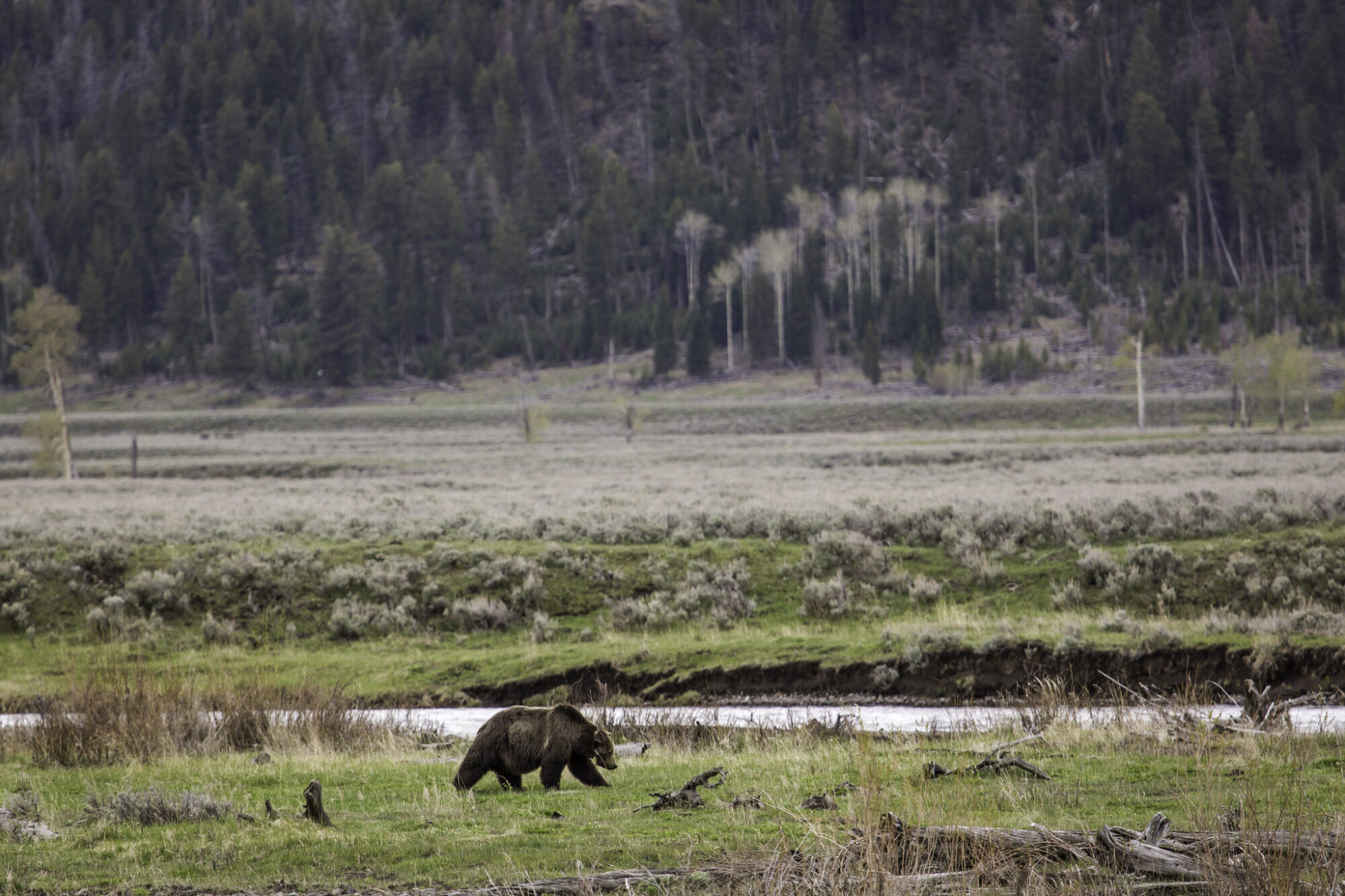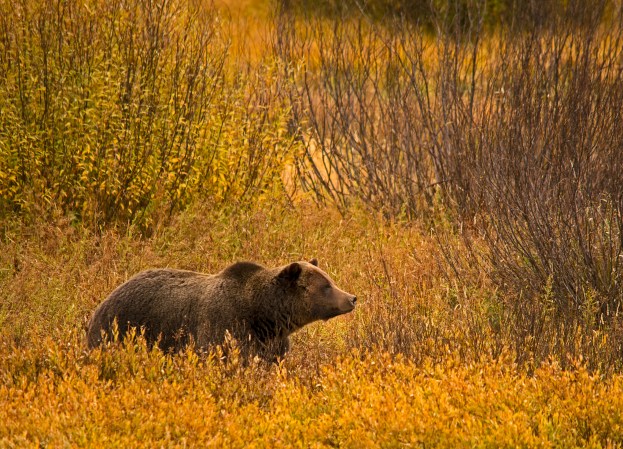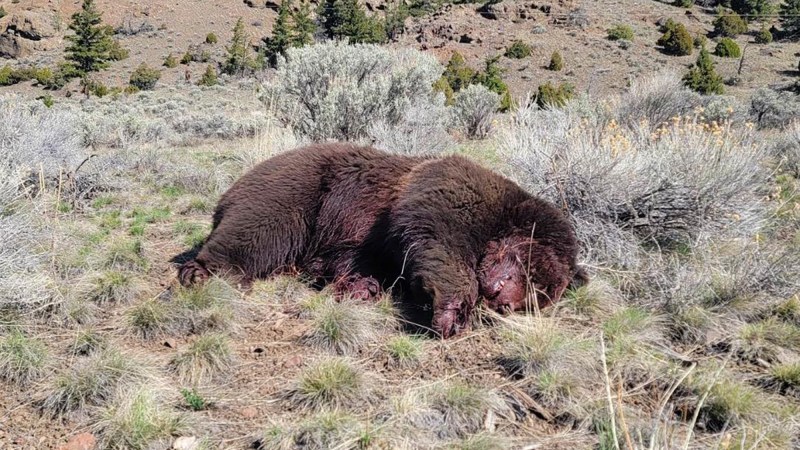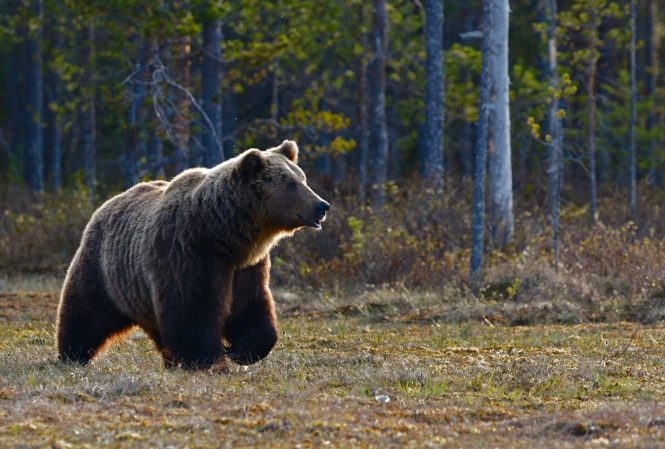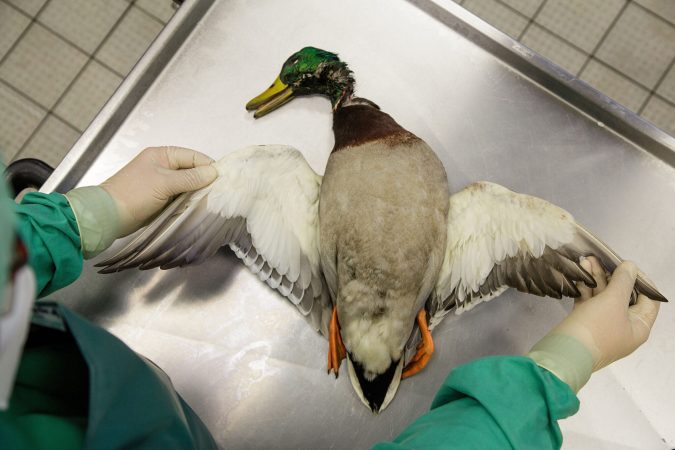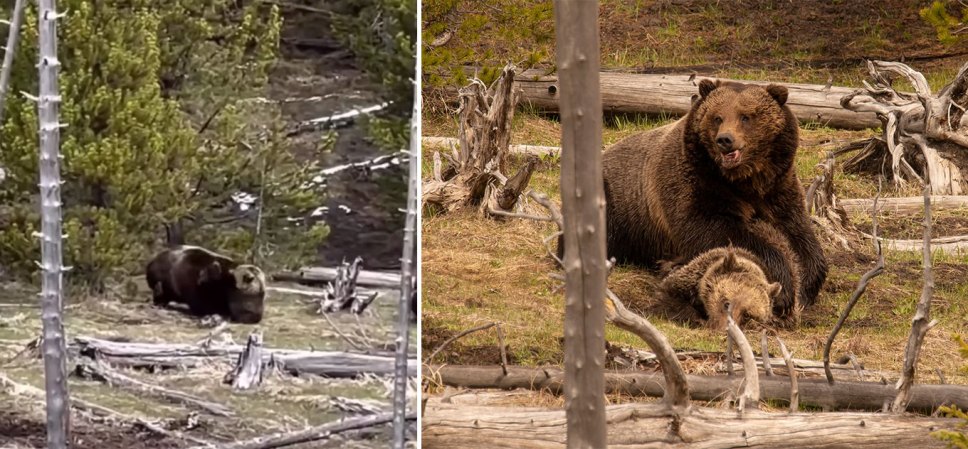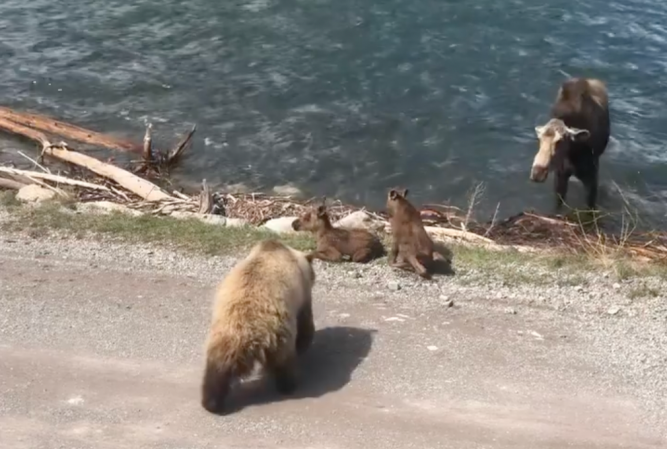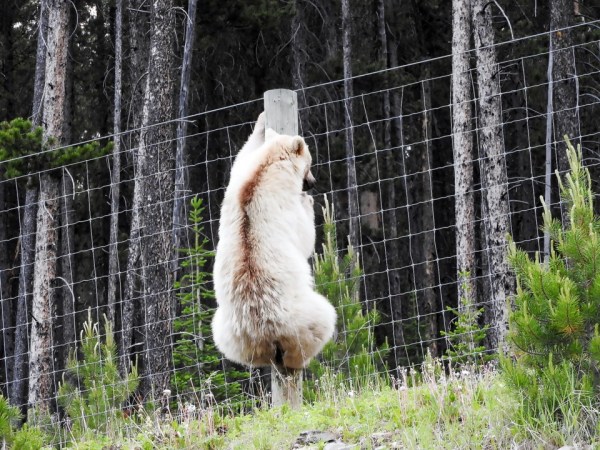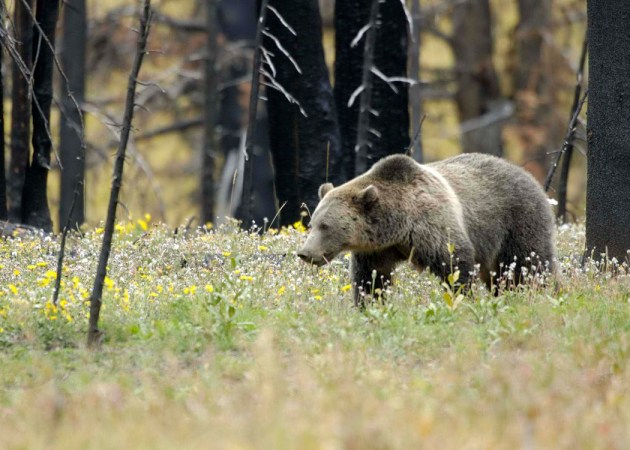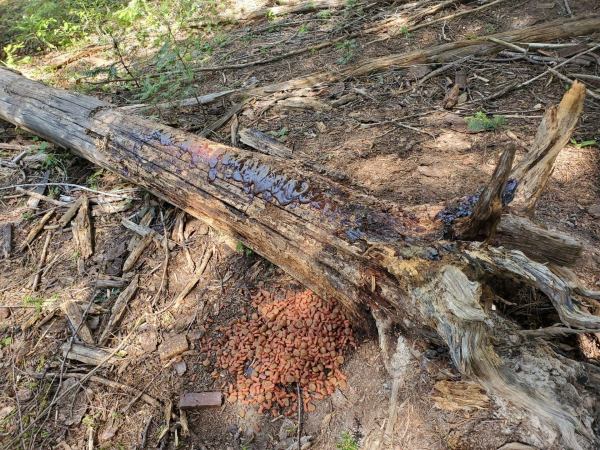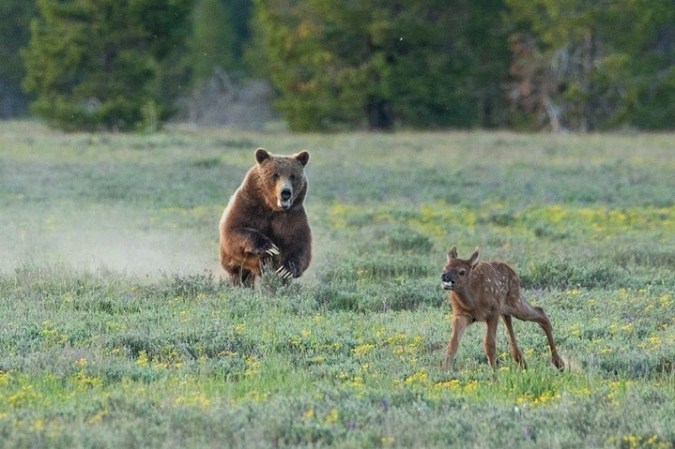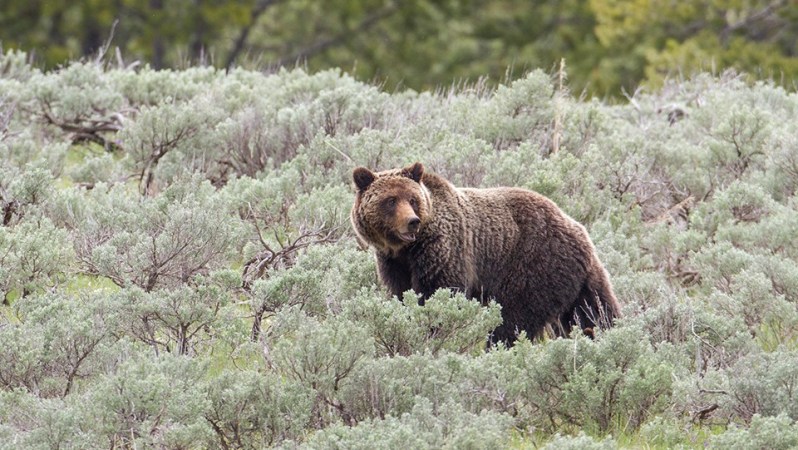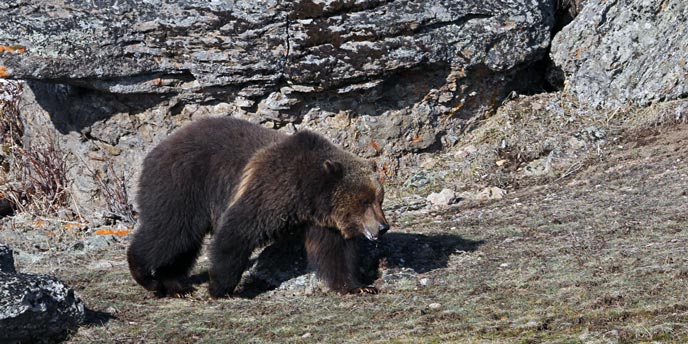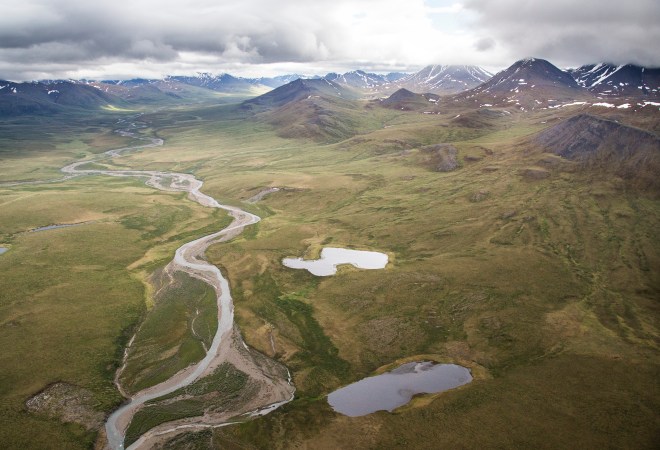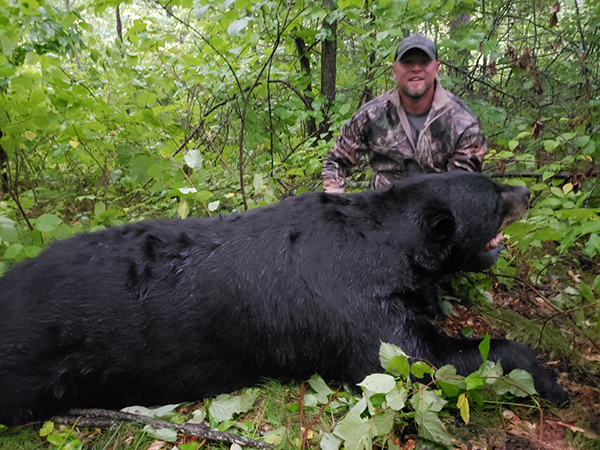A collared grizzly bear that was found dead recently in northwestern Montana was shot and killed illegally, Montana Fish, Wildlife & Parks reports. FWP and the U.S. Fish and Wildlife Service are now investigating the crime and asking for the public’s help.
State wildlife officials discovered the dead bruin off a Forest Service road north of Noxon on May 24. Their investigation determined that the bear had died from gunshot wounds on the evening of May 16. The bear wore a collar for research purposes and “had no history of conflicts,” according to the agency.
Aside from the bear being roughly seven years old and this being the first illegal grizzly bear killing in the Cabinet-Yaak Ecosystem this year, no further information is currently available, regional communication and education program coordinator Dillon Tabish tells Outdoor Life. Because grizzlies are federally protected under the Endangered Species Act, the shooter could face up to a year in prison along with fines of up to $50,000.
Grizzly Bears in the Cabinet-Yaak Ecosystem
The area where the bear was discovered is in the southern reaches of the Cabinet-Yaak Ecosystem, which spans 2,600 square miles in northwestern Montana and the eastern part of the Idaho Panhandle. The Cabinet-Yaak grizzly bear recovery zone is home to a population of roughly 60 bears, Tabish says. It is one of six grizzly bear recovery zones in the U.S. The two most well-known recovery zones are in the Greater Yellowstone and the Northern Continental Divide ecosystems. The other three zones include the Selkirk zone in western Idaho and southern B.C., the North Cascades zone in northwestern Washington, and the Bitterroot zone in southwestern Montana and eastern Idaho.
Efforts to boost the CYE grizzly population began in 1990 after it had fallen to an estimated 10 bears in the late 80s, according to FWP. Human activity is, by far, the highest driver of grizzly bear mortality in the region. From 1982 to 2021, the USFWS recorded 61 instances of human-caused grizzly bear deaths—or roughly three deaths every two years. Twenty of those bears were killed for research and management purposes or in self defense, and one was harvested legally by a hunter in Canada. The other 40 deaths were the result of poaching, mistaken animal identification, train collisions, and “unknown” human actions, some of which are still under investigation. In contrast, just 18 natural deaths occurred over the same period.
These trends are not unique to the CYE, Tabish says.
“Human-caused mortalities are the vast majority of known grizzly bear mortalities across all these ecosystems. Generally, those issues are pretty consistent across the board,” Tabish says. “We have mistaken identities by black bear hunters in the Greater Yellowstone area and the NCDE, and we have poachings in those ecosystems, too.”
Read Next: Montana Legislators, Don’t Blow Our Best Chance to Delist Grizzly Bears
In 1975, FWS listed grizzly bears in the Lower 48 as threatened. Now, populations in the GYE and NCDE have surpassed FWS’ recovery goals, prompting lots of debate across the country over the question of whether to delist the species and hand grizzly bear management back over to the states.

